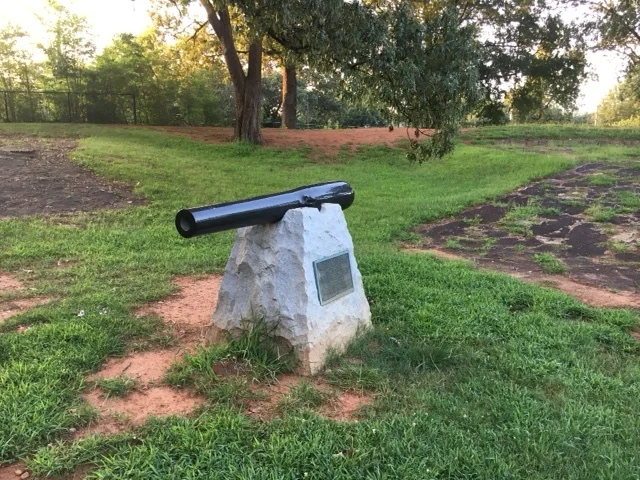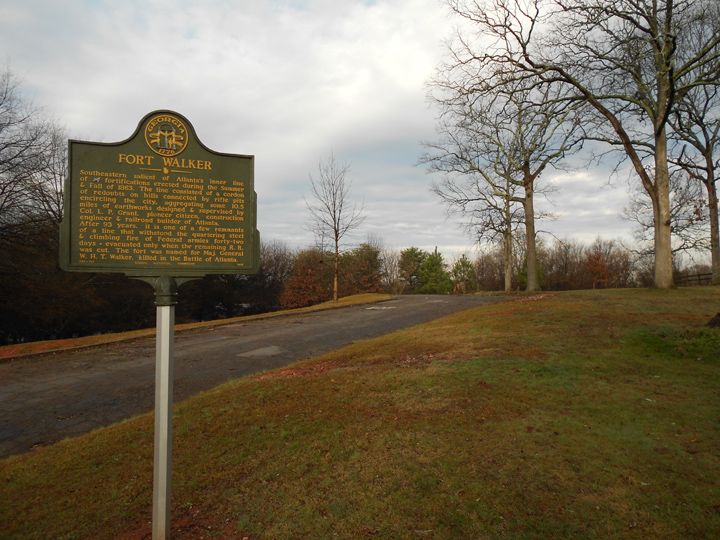


















Your Custom Text Here
Fort Walker Restoration
Atlanta, Georgia
Fulton County
2011 - Present
After Grant Park was established in the 1880s, a granite pedestal, a collection of four cannon, and two bronze lions commemorated the site of the fort. After years of vandalism by park visitors, the cannon were removed in the late 1980s, and one was stolen. The pair of bronze lions also went missing. Today, only a state historic marker remains. It reads:
Southeastern salient of Atlanta's inner line of fortifications erected during the Summer & Fall of 1863. The line consisted of a cordon of redoubts on hills connected by rifle pits encircling the city, aggregating some 10.5 miles of earthworks designed & supervised by Col. L. P. Grant, pioneer citizen, construction engineer & railroad builder of Atlanta.
After 148 years, it is one of a few remnants of a line that withstood the quartering steel & climbing fire of Federal armies forty-two days -- evacuated only when the remaining R.R. was cut. The fort was named for Maj. General W.H.T. Walker, killed in the Battle of Atlanta.
Fort Walker Restoration
Atlanta, Georgia
Fulton County
2011 - Present
After Grant Park was established in the 1880s, a granite pedestal, a collection of four cannon, and two bronze lions commemorated the site of the fort. After years of vandalism by park visitors, the cannon were removed in the late 1980s, and one was stolen. The pair of bronze lions also went missing. Today, only a state historic marker remains. It reads:
Southeastern salient of Atlanta's inner line of fortifications erected during the Summer & Fall of 1863. The line consisted of a cordon of redoubts on hills connected by rifle pits encircling the city, aggregating some 10.5 miles of earthworks designed & supervised by Col. L. P. Grant, pioneer citizen, construction engineer & railroad builder of Atlanta.
After 148 years, it is one of a few remnants of a line that withstood the quartering steel & climbing fire of Federal armies forty-two days -- evacuated only when the remaining R.R. was cut. The fort was named for Maj. General W.H.T. Walker, killed in the Battle of Atlanta.